SanDisk Ultra II (240GB) SSD Review
by Kristian Vättö on September 16, 2014 2:00 PM ESTRandom Read/Write Speed
The four corners of SSD performance are as follows: random read, random write, sequential read and sequential write speed. Random accesses are generally small in size, while sequential accesses tend to be larger and thus we have the four Iometer tests we use in all of our reviews.
Our first test writes 4KB in a completely random pattern over an 8GB space of the drive to simulate the sort of random access that you'd see on an OS drive (even this is more stressful than a normal desktop user would see). We perform three concurrent IOs and run the test for 3 minutes. The results reported are in average MB/s over the entire time.
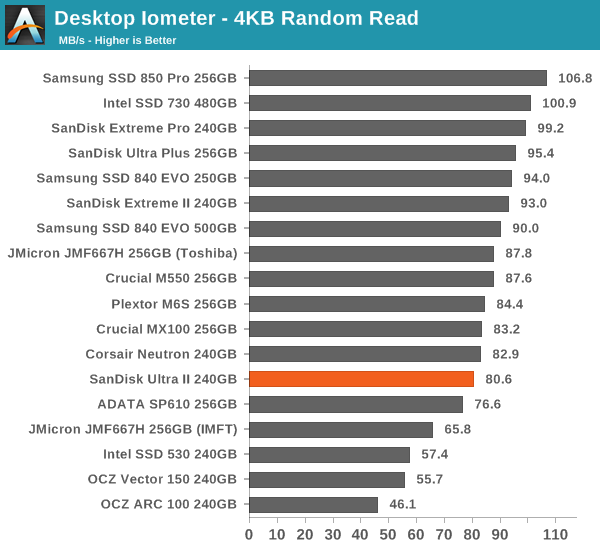
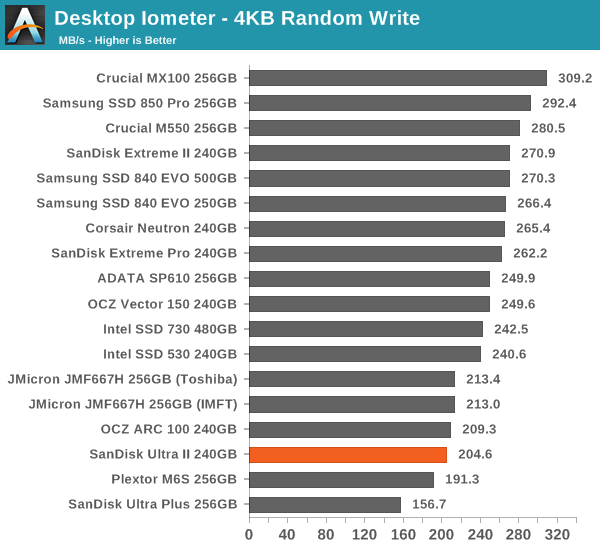
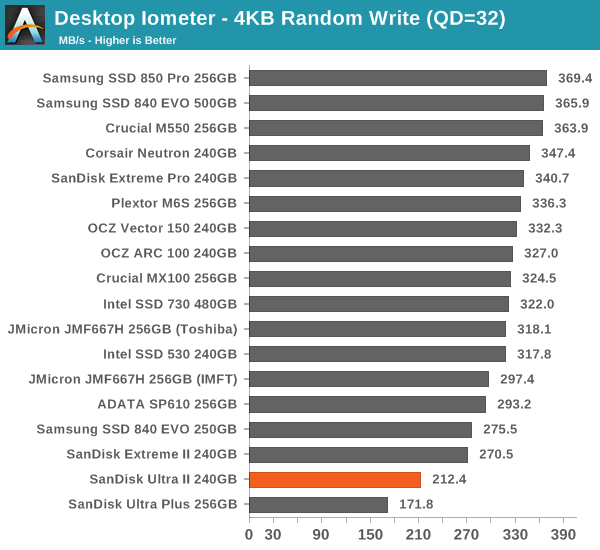
Random performance is decent but not overwhelming. I am surprised that the Ultra II is not faster considering the SLC cache that nCache 2.0 provides. Random write performance especially is a bit slow by today's standards and does not scale with queue depth, but for light client usage the Ultra II should still be fine.
Sequential Read/Write Speed
To measure sequential performance we run a 1 minute long 128KB sequential test over the entire span of the drive at a queue depth of 1. The results reported are in average MB/s over the entire test length.
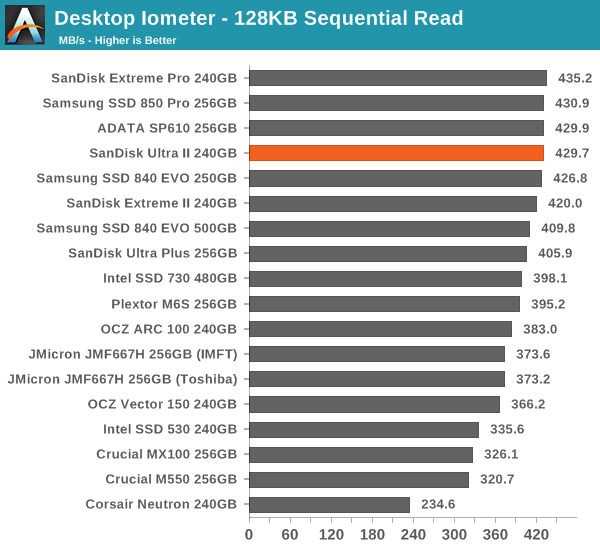
Fortunately sequential read performance is much better, although sequential write performance gets handicapped due to TLC, similar to the 840 EVO.
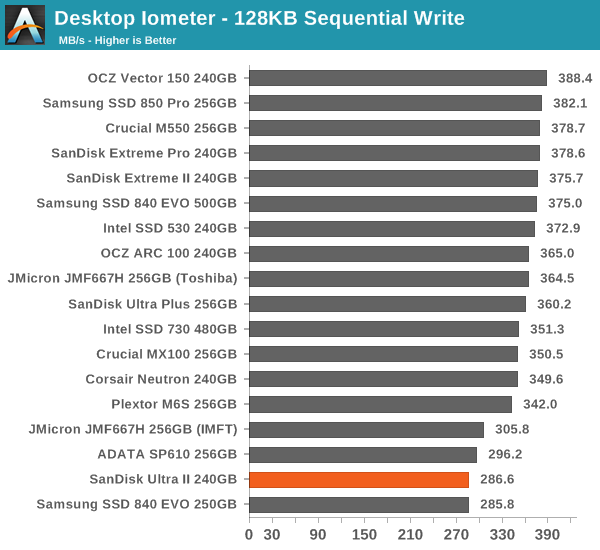
AS-SSD Incompressible Sequential Read/Write Performance
The AS-SSD sequential benchmark uses incompressible data for all of its transfers. The result is a pretty big reduction in sequential write speed on SandForce based controllers, but most other controllers are unaffected.
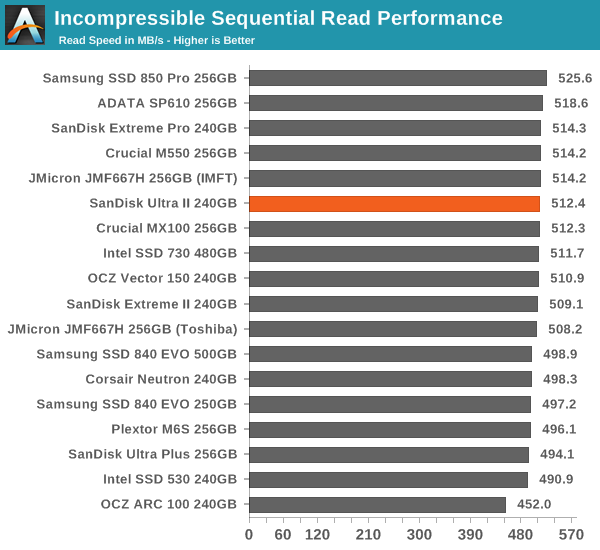











54 Comments
View All Comments
theuglyman0war - Thursday, September 18, 2014 - link
considering a RAID with one of the value SSD offerings. Would be nice if these reviews included RAID considerations in these reviews. ( does the SLC n-cache, or the MPR parity effect RAID perhaps? [158Gbit of usable capacity:132 of final user capacity does this effect RAID in ANY way?] )And how about a shootout between the mx100 evo 840 and ultra II in RAID configurations.
As many seem to go on about how final user experience is fine with these value SSDs I would imagine that at RAID speeds that would be doubly true? And the savings more meaningful?
steveshin10 - Friday, September 19, 2014 - link
I always saw your reviews well. Thank you.But I have a question about your TRIM Validation test.
If I want know about my SSDs Trim Performance then I only just follow your method?
What are difference "MS WHCK's Trim Performance test" and your test.
And I want know how working about the "WHSK's Trim Performance Test Workload"
Do you know that? or How can I trace (or see, or known) the "WHCK Trim Perormance Test Workload"?
Thank you.
kgh00007 - Wednesday, September 24, 2014 - link
Is TLC nand even a good idea considering what is happening to the 840 EVO and older data?I'm worried about TLC nand loosing data if it is powered off for a long time.
sirkiwi - Friday, October 24, 2014 - link
Excellent alternative to the MX100. I'll grab a Sandisk rather than a Crucial for my next build.